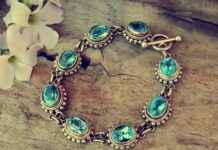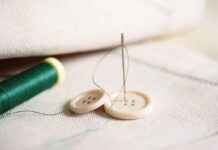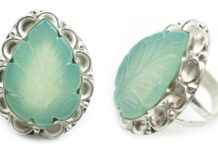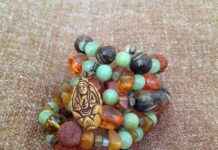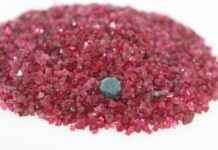Art Deco jewelry, celebrated for its bold geometric designs and lavish materials, is currently experiencing a significant resurgence in popularity. This article delves into the factors driving this trend and explores its cultural significance in the modern era.
The History of Art Deco Jewelry
Emerging in the 1920s, Art Deco was a revolutionary design movement that embraced modernity and innovation. Its historical context, marked by the Roaring Twenties, provides insight into why these exquisite pieces are making a comeback today. The movement was a response to the ornate styles of the past, favoring sleek lines and a sense of luxury.
Key Features of Art Deco Jewelry
Art Deco jewelry is characterized by its geometric shapes, vibrant colors, and luxurious materials. These defining characteristics contribute to the allure of these pieces. The combination of symmetry and intricate detailing creates a unique aesthetic that appeals to modern sensibilities.
Materials Used in Art Deco Jewelry
- Platinum: Known for its durability and luster, platinum was a favored metal in Art Deco jewelry.
- Diamonds: Often used for their brilliance and elegance, diamonds are a staple in many Art Deco designs.
- Colored Gemstones: These added vibrancy and uniqueness, with popular choices including emeralds, rubies, and sapphires.
Why Art Deco Jewelry Is Popular Again
The revival of Art Deco jewelry can be attributed to several factors, including a sense of nostalgia, prevailing fashion trends, and the influence of celebrities. As modern consumers seek unique and historical pieces, the allure of Art Deco becomes increasingly evident.
How to Style Art Deco Jewelry
Incorporating Art Deco jewelry into modern wardrobes can elevate any outfit. Here are some tips:
- Pairing with Modern Fashion: Art Deco pieces can complement contemporary styles, adding a touch of elegance.
- Accessorizing for Different Occasions: Whether for casual outings or formal events, Art Deco jewelry can be styled to suit various occasions.
The Future of Art Deco Jewelry
The future of Art Deco jewelry appears bright, with ongoing interest and innovation. As designers continue to reinterpret these classic styles, we can expect to see a sustained fascination with Art Deco aesthetics in the years to come.

The History of Art Deco Jewelry
is a fascinating journey that reflects the cultural and artistic movements of the early 20th century. Emerging in the 1920s, Art Deco was a response to the tumultuous times following World War I, symbolizing a shift towards modernity and luxury. This period was marked by a desire for innovation, leading to the creation of distinctive designs that combined elegance with functionality.
Art Deco jewelry is characterized by its bold geometric shapes, vibrant colors, and the use of luxurious materials. Influenced by various art movements including Cubism and Futurism, these pieces often featured intricate patterns and symmetrical designs. The period embraced modern materials such as platinum, which was favored for its strength and ability to hold intricate designs, as well as colored gemstones that added a unique flair to each piece.
The historical context of Art Deco jewelry is essential to understanding its revival in contemporary fashion. The 1920s represented a time of liberation and exuberance, where society began to embrace new ideas about style and self-expression. This cultural backdrop fostered an environment where artists and jewelers could experiment with new forms and materials, leading to the creation of stunning pieces that are still sought after today.
As we look at the resurgence of Art Deco jewelry in modern times, it is evident that its appeal lies in its timeless elegance and the nostalgia it evokes. The revival is not merely a trend but a testament to the enduring legacy of this artistic movement, reminding us of a time when craftsmanship and creativity flourished.
In conclusion, understanding the history of Art Deco jewelry allows us to appreciate its unique characteristics and the cultural significance it holds. As it continues to make a comeback in the fashion world, the allure of Art Deco remains as strong as ever, captivating new generations of jewelry enthusiasts.
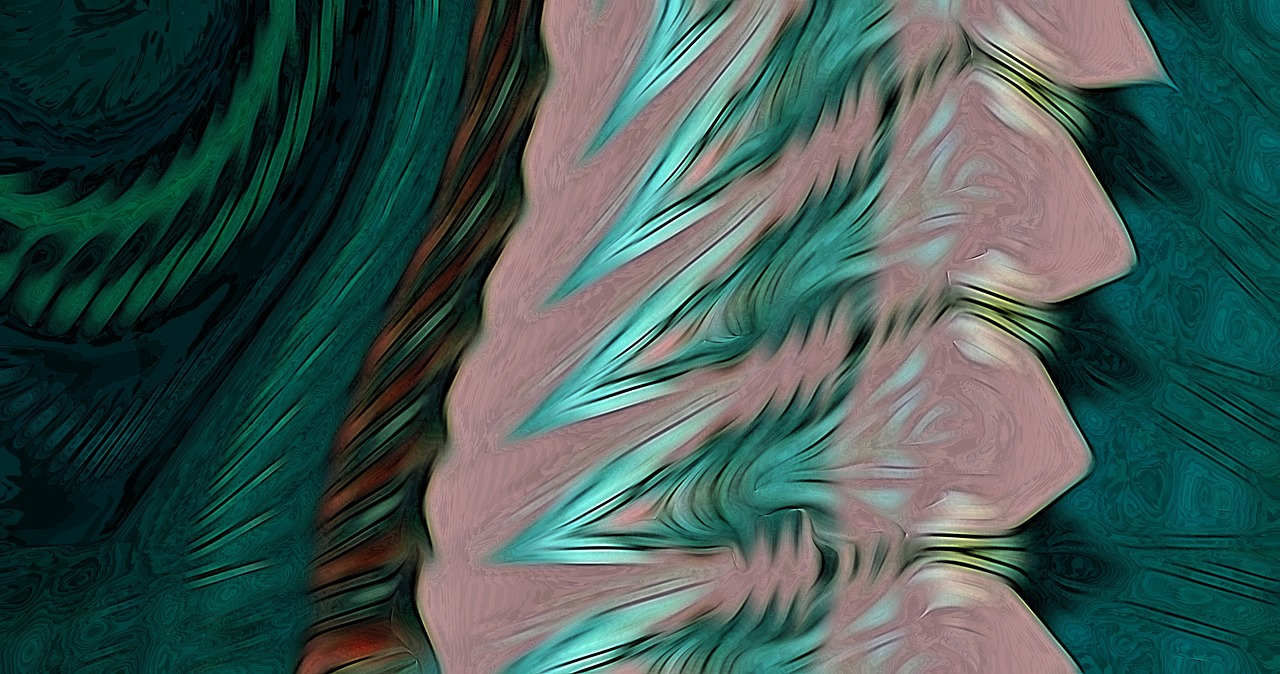
Key Features of Art Deco Jewelry
Art Deco jewelry is a stunning representation of the artistic movement that flourished in the early 20th century. Known for its distinctive geometric shapes, vibrant colors, and luxurious materials, it has captivated collectors and fashion enthusiasts alike. This section explores the key features that contribute to the enduring appeal of Art Deco jewelry.
- Geometric Shapes: One of the most recognizable aspects of Art Deco jewelry is its use of bold geometric designs. These shapes often include triangles, zigzags, and chevrons, creating a sense of movement and dynamism.
- Vibrant Colors: Art Deco pieces frequently incorporate a striking palette of colors. Colored gemstones such as emeralds, sapphires, and rubies are often set against the backdrop of platinum or gold, enhancing their brilliance and visual impact.
- Luxurious Materials: The materials used in Art Deco jewelry are of the highest quality. Platinum is a favored choice due to its strength and luster, allowing artisans to create intricate designs that stand the test of time.
- Symmetry and Balance: A hallmark of Art Deco design is its emphasis on symmetry. Many pieces are meticulously crafted to achieve a balanced look, which adds to their elegance and sophistication.
- Intricate Detailing: Art Deco jewelry is often adorned with intricate detailing that showcases the craftsmanship of the era. From filigree work to engraving, these details elevate the overall aesthetic of each piece.
These defining characteristics not only highlight the artistry involved in creating Art Deco jewelry but also explain why these pieces remain highly coveted today. Their unique blend of style, elegance, and historical significance continues to resonate with modern audiences, making them a timeless addition to any jewelry collection.
Materials Used in Art Deco Jewelry
Art Deco jewelry is renowned for its exquisite craftsmanship and the use of luxurious materials that define its unique aesthetic. Among these materials, platinum, diamonds, and a variety of colored gemstones play pivotal roles in creating stunning pieces that capture the essence of the era.
Platinum, a metal celebrated for its strength and brilliance, became a favored choice for Art Deco artisans. Its natural luster enhances the overall appearance of jewelry, allowing for intricate designs that stand out. The durability of platinum ensures that these pieces not only look magnificent but also withstand the test of time, making them cherished heirlooms.
Diamonds are another hallmark of Art Deco jewelry. Their sparkle and clarity add a touch of glamour and sophistication to any piece. In the context of Art Deco, diamonds are often cut in geometric shapes that reflect the movement’s emphasis on symmetry and bold lines. This innovative approach to diamond cutting allows for a play of light that is both captivating and mesmerizing.
In addition to platinum and diamonds, colored gemstones are integral to the Art Deco aesthetic. These vibrant stones, including emeralds, rubies, and sapphires, introduce a spectrum of color that enhances the visual appeal of jewelry. The use of colored gemstones allows for personalization and creativity, as designers often juxtaposed different hues to create striking contrasts and patterns.
Moreover, the combination of these materials not only elevates the beauty of Art Deco jewelry but also reflects the cultural significance of the era. The luxuriousness of the materials used signifies wealth and status, while the innovative designs represent a break from traditional aesthetics, aligning with the modernist movement of the time.
In conclusion, the materials used in Art Deco jewelry—platinum, diamonds, and colored gemstones—are not just components of design; they are essential elements that contribute to the overall allure and significance of these timeless pieces. Their enduring popularity speaks to the craftsmanship and artistic vision that define the Art Deco movement.
Platinum’s Role in Art Deco
Platinum has long been revered in the world of jewelry, particularly during the Art Deco period, which flourished in the 1920s and 1930s. Its unique properties made it the material of choice for many artisans and designers of the time. This section delves into the reasons behind platinum’s dominance in Art Deco jewelry.
One of the primary reasons for platinum’s popularity is its durability. Unlike gold or silver, platinum is highly resistant to wear and tarnishing. This quality allowed jewelers to create intricate and detailed designs without worrying about the pieces losing their form or luster over time. The strength of platinum also meant that it could hold gemstones securely, making it an ideal choice for settings that featured diamonds and other precious stones.
Additionally, platinum has a natural luster that enhances the brilliance of the gemstones it accompanies. This characteristic is particularly important in Art Deco jewelry, where the interplay of light and color is crucial to the overall aesthetic. The reflective quality of platinum adds a radiant glow to the designs, making them stand out in any collection.
Furthermore, the use of platinum in jewelry during the Art Deco era symbolized luxury and elegance. As a rare metal, it was often associated with wealth and sophistication, appealing to the affluent consumers of the time. This association has continued into modern times, where platinum pieces are still viewed as a testament to fine craftsmanship and high status.
In summary, platinum’s combination of durability, luster, and association with luxury made it a staple in Art Deco jewelry. Its ability to support intricate designs while enhancing the beauty of gemstones has ensured its lasting appeal in the world of fine jewelry.
The Use of Colored Gemstones
Colored gemstones played a pivotal role in the evolution of Art Deco jewelry, offering a striking contrast to the era’s typical materials. Their vibrant hues and unique properties not only enhanced the visual appeal of the pieces but also allowed for a greater expression of individuality and artistic flair.
During the Art Deco period, which spanned from the 1920s to the 1930s, designers sought to break away from traditional aesthetics. This was reflected in their choice of gemstones. Unlike the classic diamond-centric designs of previous eras, Art Deco embraced a palette that included a variety of colored gemstones, each contributing its own personality to the jewelry.
- Emeralds – Known for their deep green hue, emeralds were often used to symbolize rebirth and renewal. Their richness added a luxurious touch to many Art Deco pieces.
- Rubies – The vibrant red of rubies represented passion and vitality. Their bold color was frequently employed to create dramatic contrasts within jewelry designs.
- Sapphires – Available in a range of colors, sapphires were particularly favored for their royal blue shade. They were often paired with diamonds to create stunning visual effects.
- Amethysts – The purple tones of amethysts provided a sense of tranquility and sophistication, making them a popular choice for intricate designs.
The impact of these gemstones extended beyond mere aesthetics. Each stone carried its own symbolism and meaning, allowing wearers to express their emotions and values through their jewelry choices. This connection between the wearer and the gemstone added a layer of depth to the Art Deco designs, making them not just objects of beauty but also personal talismans.
In conclusion, the use of colored gemstones in Art Deco jewelry was a revolutionary step that transformed the landscape of jewelry design. Their vibrant colors and unique characteristics contributed significantly to the overall aesthetic, ensuring that Art Deco pieces remain timeless and cherished in the world of fashion.
Design Elements of Art Deco Jewelry
Art Deco jewelry is renowned for its distinctive and captivating design elements that set it apart from other styles. The allure of these pieces can be attributed to several key factors:
- Symmetry: One of the hallmark features of Art Deco design is its emphasis on symmetry. This balanced approach creates a sense of harmony and elegance, drawing the eye to the piece as a whole. Symmetrical designs often reflect the era’s fascination with modernity and order.
- Bold Lines: Art Deco jewelry is characterized by its use of bold, geometric lines. These sharp angles and clear shapes contribute to a striking visual impact, making the pieces stand out. The boldness of the lines often symbolizes strength and sophistication, appealing to those who appreciate a more assertive aesthetic.
- Intricate Detailing: While Art Deco designs are often simple in form, they are also rich in detail. This intricate craftsmanship can be seen in the use of engraving, filigree, and the meticulous setting of stones. Such detailing adds depth and texture, enhancing the overall beauty of the jewelry.
- Vibrant Colors: The use of vibrant colors, particularly through the incorporation of colored gemstones, is another defining characteristic. Art Deco jewelry often features a palette that includes deep blues, rich greens, and radiant reds, which not only adds visual interest but also reflects the bold spirit of the era.
These design elements collectively contribute to the timeless appeal of Art Deco jewelry. Each piece tells a story of elegance and sophistication, making it a cherished addition to any jewelry collection. As we explore the enduring popularity of Art Deco, it becomes clear that these elements are not just aesthetic choices; they embody a cultural movement that continues to inspire.

Why Art Deco Jewelry Is Popular Again
The resurgence of Art Deco jewelry is a fascinating phenomenon that reflects a blend of cultural nostalgia, evolving fashion trends, and the powerful influence of celebrities. This revival is not merely a fleeting trend; it signifies a deeper appreciation for the artistry and craftsmanship that define this iconic style.
One of the primary factors driving the popularity of Art Deco jewelry is nostalgia. As people seek to connect with the past, vintage styles have become increasingly appealing. The bold geometric designs and intricate detailing of Art Deco pieces evoke a sense of history and elegance that resonates with many. This longing for unique and historical items encourages collectors and fashion enthusiasts alike to seek out Art Deco jewelry, often viewing it as a statement piece that tells a story.
In addition to nostalgia, current fashion trends play a crucial role in the revival of Art Deco jewelry. Designers are increasingly incorporating vintage elements into their collections, leading to a resurgence of interest in styles from the 1920s and 1930s. The clean lines and vibrant colors of Art Deco designs complement modern aesthetics, making them a versatile choice for contemporary outfits.
The influence of celebrities cannot be understated in this resurgence. Fashion icons and public figures often showcase Art Deco jewelry on red carpets and in media appearances, sparking public interest and desire. When celebrities embrace these vintage pieces, it not only highlights their beauty but also positions them as fashionable and desirable accessories in today’s world.
In conclusion, the revival of Art Deco jewelry is driven by a combination of nostalgia, modern fashion trends, and celebrity influence. As more people recognize the beauty and significance of these pieces, it is likely that their popularity will continue to grow, bridging the gap between the past and present in the world of fashion.
Nostalgia and Vintage Trends
In recent years, there has been a noticeable resurgence in the popularity of vintage styles, particularly in the realm of jewelry. This trend is largely fueled by a deep sense of nostalgia that resonates with many individuals who seek to reconnect with the past. Art Deco jewelry, with its distinctive designs and historical significance, has become a prime example of this movement.
Art Deco, which flourished in the 1920s and 1930s, is characterized by its bold geometric shapes, vibrant colors, and luxurious materials. As people increasingly seek out unique and historical pieces, Art Deco jewelry stands out as a symbol of elegance and craftsmanship. The allure of these pieces goes beyond mere aesthetics; they embody a rich history that many find appealing.
Moreover, the desire for authenticity in fashion has driven collectors and enthusiasts to seek out vintage jewelry that tells a story. Unlike mass-produced items, each piece of Art Deco jewelry carries its own narrative, often reflecting the era’s cultural and artistic movements. This connection to history adds a layer of significance that modern jewelry often lacks.
Additionally, the influence of social media and fashion icons cannot be overlooked. As celebrities and influencers showcase their vintage finds online, the demand for Art Deco pieces has surged. People are inspired to incorporate these historical items into their wardrobes, not only for their beauty but also for the unique style they provide.
In conclusion, the rising popularity of Art Deco jewelry can be attributed to a combination of nostalgia, the quest for unique pieces, and the influence of modern fashion trends. As more individuals embrace vintage styles, the legacy of Art Deco continues to thrive, making it a timeless choice for jewelry lovers everywhere.
Influence of Fashion Icons
In recent years, Art Deco jewelry has seen a remarkable revival, largely driven by the influence of fashion icons and celebrities. These influential figures often showcase stunning pieces from this era, which not only highlights their personal style but also sparks public interest and desire for similar items.
Fashion icons such as Rihanna, Zendaya, and Lady Gaga have been spotted wearing exquisite Art Deco jewelry at high-profile events, including award shows and fashion weeks. Their choices often set trends that resonate across the fashion landscape, encouraging fans and fashion enthusiasts to explore vintage styles.
- Red Carpet Appearances: Celebrities often choose Art Deco pieces for their elegance and historical significance, making them a popular choice for red carpet events.
- Social Media Influence: Platforms like Instagram and TikTok amplify the visibility of these jewelry pieces, as influencers showcase their unique styles, inspiring followers to adopt similar looks.
- Collaborations with Designers: Many fashion icons collaborate with jewelry designers to create exclusive Art Deco-inspired collections, further fueling the trend.
The resurgence of interest in Art Deco jewelry can also be attributed to the nostalgic appeal of vintage fashion. As the world moves towards sustainability, many are turning to timeless pieces that carry a rich history. This shift aligns perfectly with the ongoing trend of incorporating vintage elements into modern wardrobes.
Moreover, the intricate craftsmanship and luxurious materials characteristic of Art Deco jewelry resonate with consumers seeking unique and statement-making accessories. As these fashion icons continue to embrace and promote Art Deco styles, their influence will undoubtedly shape public interest and jewelry choices for years to come.

How to Style Art Deco Jewelry
Incorporating Art Deco jewelry into your wardrobe can transform any outfit, infusing it with a timeless elegance that stands out. These pieces, characterized by their bold geometric designs and luxurious materials, can be styled in numerous ways to suit various occasions. Here are some effective tips on how to seamlessly integrate Art Deco jewelry into your modern wardrobe.
- Mix with Modern Fashion: Pairing Art Deco pieces with contemporary clothing can create a stunning contrast. For instance, wearing a statement Art Deco necklace over a simple, modern dress can elevate your look instantly. The key is to let the jewelry shine without overwhelming your outfit.
- Layering Techniques: Layering is a great way to showcase your Art Deco jewelry. Combine several rings or bracelets to create a unique stack. Ensure that the pieces complement each other in terms of color and design, maintaining the geometric harmony typical of Art Deco style.
- Accessorizing for Different Occasions: Consider the event when styling your jewelry. For formal events, opt for more intricate pieces, such as a diamond-encrusted brooch or chandelier earrings. For casual outings, simpler designs can add a touch of sophistication without being overly formal.
- Color Coordination: Art Deco jewelry often features vibrant colors. When choosing your outfit, consider colors that complement the gemstones in your jewelry. For example, a blue sapphire ring can be beautifully paired with a navy dress or a white blouse.
- Balancing Proportions: If you’re wearing a bold Art Deco piece, balance it with more understated clothing. For instance, if you choose to wear a large Art Deco cuff bracelet, keep your outfit simple to avoid clashing styles.
By following these styling tips, you can effortlessly incorporate Art Deco jewelry into your daily attire, allowing you to express your unique style while embracing the elegance of this iconic era.
Pairing with Modern Fashion
Pairing Art Deco Jewelry with Modern Fashion is an art that combines the elegance of the past with the trends of today. By understanding how to integrate these vintage pieces into contemporary wardrobes, you can create stunning outfits that stand out.
Art Deco jewelry, with its bold geometric designs and rich materials, offers a unique aesthetic that can enhance modern fashion. Here are some tips on how to effectively pair these exquisite pieces with current styles:
- Layering with Minimalism: Pair Art Deco necklaces with simple, minimalist tops. The contrast between the intricate designs of the jewelry and the understated clothing creates a balanced look.
- Mixing Eras: Don’t hesitate to mix contemporary and vintage styles. For instance, wearing a modern blazer with a classic Art Deco brooch can add a touch of sophistication to your outfit.
- Color Coordination: Choose outfits that complement the vibrant colors often found in Art Deco jewelry. A dress in a solid color can serve as a perfect backdrop for colorful statement pieces.
- Statement Pieces: Let your Art Deco jewelry be the focal point of your outfit. If you’re wearing a bold necklace, keep other accessories minimal to avoid overwhelming your look.
- Occasion-Based Styling: For formal events, Art Deco earrings paired with an elegant gown can create a timeless look. For casual outings, a simple Art Deco ring can add a touch of glamour without being too flashy.
In conclusion, incorporating Art Deco jewelry into modern fashion is not just about wearing vintage; it’s about creating a unique personal style that reflects both history and contemporary trends. By following these styling tips, you can showcase the beauty of Art Deco pieces while staying fashionable and relevant.
Accessorizing for Different Occasions
Accessorizing with Art Deco jewelry can elevate your style, whether you’re attending a casual gathering or a formal event. The key to successfully incorporating these stunning pieces lies in understanding the occasion and choosing the right accessories to complement your outfit.
For casual events, such as brunches or informal gatherings, consider selecting Art Deco earrings or a simple pendant necklace. These pieces can add a touch of elegance without overwhelming your look. Pair them with a relaxed outfit, like a crisp white blouse and jeans, to create a balanced appearance. Using colorful gemstones in your accessories can also enhance a laid-back vibe while still showcasing the unique designs characteristic of the Art Deco era.
When dressing for formal occasions, such as weddings or galas, you can embrace the full opulence of Art Deco jewelry. Opt for statement pieces like a bold cocktail ring or an intricately designed bracelet. These accessories can serve as the focal point of your outfit, allowing you to keep the rest of your attire more understated. A classic little black dress or an elegant gown can be perfectly complemented by the geometric lines and vibrant colors of Art Deco jewelry.
In addition to the style of the jewelry, consider the color palette of your outfit. Art Deco pieces often feature striking contrasts and rich hues, so coordinating your clothing with your accessories can create a cohesive look. For instance, wearing a deep blue dress with silver Art Deco jewelry can create a stunning visual effect.
Ultimately, accessorizing with Art Deco jewelry is about expressing your personal style while honoring the unique characteristics of these exquisite pieces. By thoughtfully selecting your accessories based on the occasion, you can effortlessly incorporate the charm of Art Deco into your wardrobe.
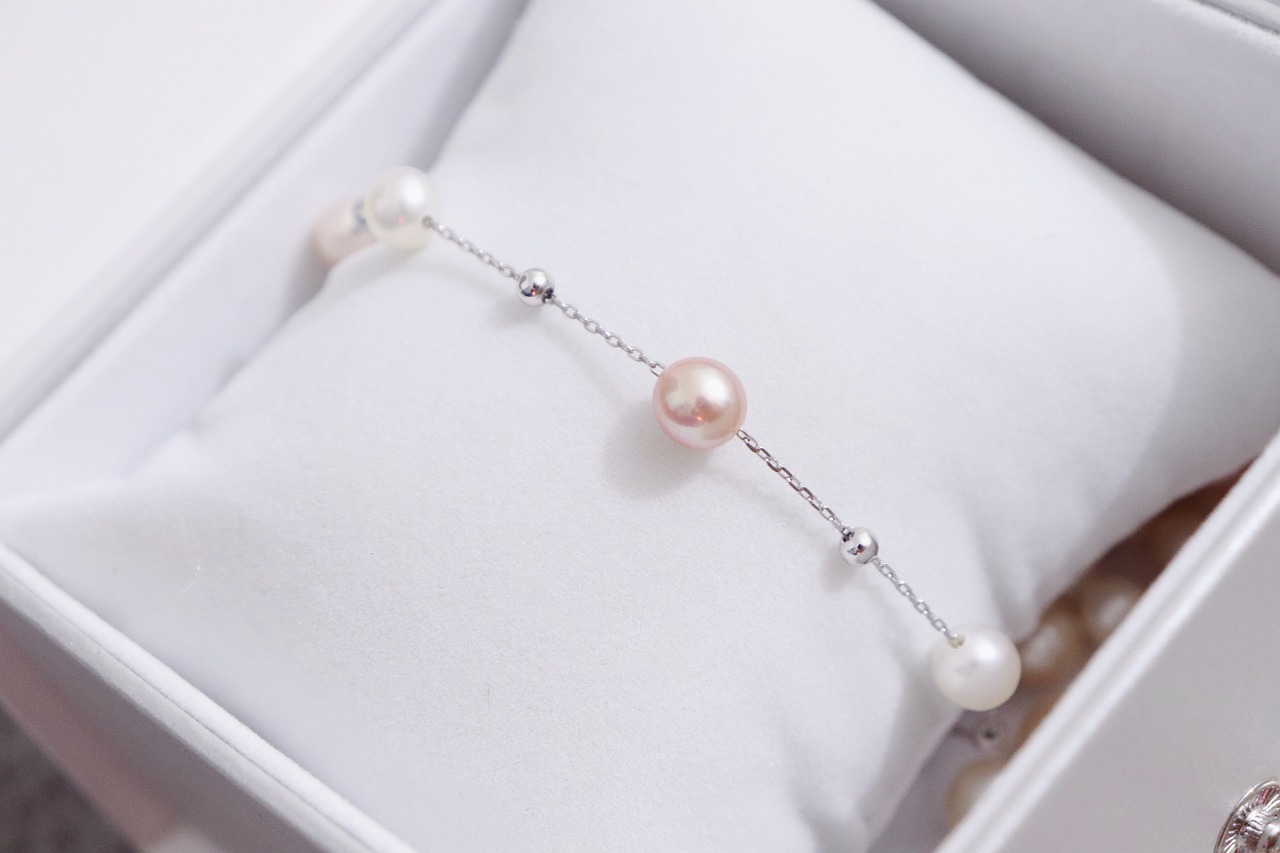
The Future of Art Deco Jewelry
The future of Art Deco jewelry is indeed bright, reflecting a blend of nostalgia and modern innovation. As we look ahead, several trends and factors are likely to shape the evolution of this iconic style.
Firstly, the revival of vintage aesthetics continues to gain momentum, with many designers drawing inspiration from the Art Deco period. This resurgence is not merely a fleeting trend; it represents a deeper appreciation for craftsmanship and the artistry of the past. As consumers increasingly seek unique pieces that tell a story, Art Deco jewelry stands out for its timeless appeal.
Moreover, the integration of modern technology in jewelry design is paving the way for innovative creations. 3D printing and advanced design software allow artisans to experiment with intricate patterns and shapes that were once difficult to achieve. This technological advancement could lead to a new wave of Art Deco-inspired jewelry that marries classic styles with contemporary techniques.
| Trend | Description |
|---|---|
| Vintage Revival | Growing demand for unique, historical pieces. |
| Modern Technology | Use of 3D printing and design software for innovative creations. |
| Sustainable Practices | Focus on eco-friendly materials and ethical sourcing. |
Additionally, the focus on sustainability is becoming increasingly important in the jewelry industry. Art Deco jewelry can adapt to this trend by incorporating ethically sourced materials and environmentally friendly practices. Consumers are more conscious than ever about the origins of their purchases, and this shift could enhance the desirability of Art Deco pieces that align with these values.
In conclusion, the future of Art Deco jewelry is poised for growth, driven by a mix of nostalgia, technological innovation, and sustainability. As these trends unfold, we can expect to see a vibrant evolution of this beloved style, ensuring its place in the contemporary jewelry landscape.
Frequently Asked Questions
- What is Art Deco jewelry?
Art Deco jewelry refers to the stunning pieces created during the Art Deco movement, which flourished in the 1920s and 1930s. Known for its bold geometric designs and luxurious materials, this style is a celebration of modernity and elegance.
- Why is Art Deco jewelry making a comeback?
The resurgence of Art Deco jewelry can be linked to a blend of nostalgia, current fashion trends, and the influence of celebrities. Many people are drawn to its unique historical charm, which adds a touch of glamour to contemporary wardrobes.
- What materials are commonly used in Art Deco jewelry?
Art Deco pieces typically feature platinum, diamonds, and a variety of colored gemstones. These materials not only enhance the beauty of the jewelry but also contribute to its durability and luxurious appeal.
- How can I style Art Deco jewelry with modern outfits?
Styling Art Deco jewelry is all about balance! You can pair these vintage pieces with contemporary fashion to create a striking look. For instance, a classic Art Deco necklace can elevate a simple dress, making it perfect for both casual and formal occasions.
- Is Art Deco jewelry suitable for everyday wear?
Absolutely! While Art Deco jewelry is often seen as elegant and sophisticated, many pieces can be styled for everyday wear. Just choose simpler designs or smaller pieces to keep your look chic yet understated.


